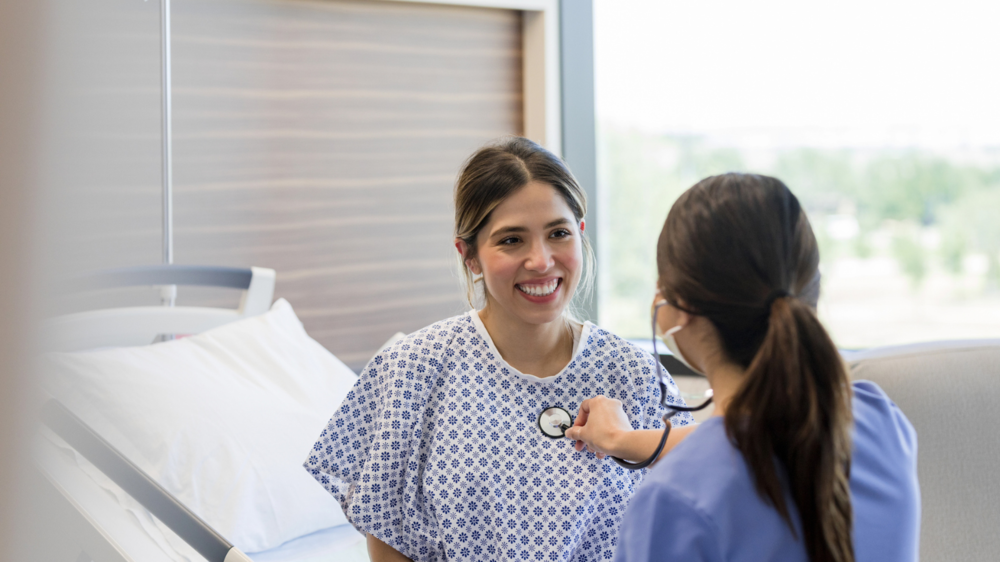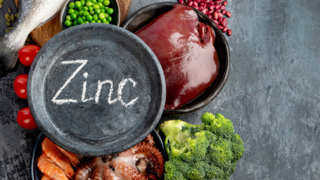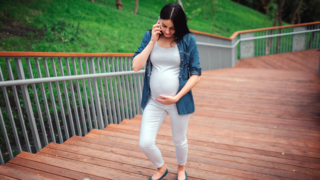In this article:
If you’ve had a C-section and are thinking about getting pregnant again, it’s helpful to know how long to wait and what risks to consider. Understanding all aspects of pregnancy following a C-section, including its impact on future pregnancies and the ideal time to conceive again, is essential for a healthier and more informed motherhood experience.
C-Section: An Overview
A caesarean section, or C-section, is the surgical delivery of a baby by making incisions in the mother's abdomen and uterus. This is mainly used when vaginal delivery threatens the mother or the baby or can also be opted by choice.Common indications for C-sections include prolonged labour, foetal distress, breech presentation, placental issues or previous uterine surgeries. The whole process requires about an hour, with spinal or epidural anaesthesia numbing the lower body.
The mother is awake through the surgery but feels pressure as the delivery process continues. Recovery typically takes six weeks or longer, compared to a vaginal delivery.
Although C-sections are safe, the procedure carries some risks, including uterine rupture in later pregnancies. This primarily happens when sufficient healing time after the operation is not observed. Thus, knowing how long to wait until conceiving is crucial for maternal and foetal health.
Reasons for a C-Section
The reasons can vary, but generally fall under three categories:Emergency C-Section vs. Elective C-Section
- Elective C-section: This is often a scheduled procedure before the due date. There may also be personal or medical reasons for choosing to have one, such as evasive labour complications or a previous birth experience or an unknown risk that may arise while delivering vaginally.
- Emergent C-section: This is when unforeseen circumstances occur during labour or delivery. It’s done urgently to protect the health of the mother or baby when time is of the essence, like in prolonged labour or sudden bleeding.
Medical Conditions
Foetal Distress or Complications
Pregnancy After a C-Section: How Long Should You Wait?
The best time for a pregnancy after a Caesarean section depends on your age, general health, and how well your body has healed. Allowing a gap of 18 to 24 months between pregnancies provides your body, particularly the uterine scar, sufficient time to heal.This spacing reduces the risk of complications like uterine rupture, placenta previa, or low birth weight, making it the safest interval for both mother and baby.
Why Is Waiting Important?
A C-section entails making an incision in the abdominal muscles and uterine tissue, all of which take a long time to heal completely. Inadequate recovery time can raise risks such as uterine rupture during labour or problems like placenta previa and placental abruption in future pregnancies.Here’s why it’s vital to wait:
- Scar of the Uterus: The uterus requires sufficient time for healing from the incision during the surgery. If the scar is poorly healed, there is a higher risk that the scar will rupture during labour in subsequent pregnancies.
- Nutritional Recovery: Pregnancy depletes some of your essential nutrients, such as iron and calcium. Making space between pregnancies allows replenishment of these nutrients, improving maternal health.
- Physical Recovery: Abdominal muscles and uterine tissue require time to heal after surgery. Waiting for these muscles to strengthen can decrease the strain on your pelvic floor and pelvic organs in later pregnancies.
- Mental Health: The recovery from childbirth, particularly C-sections, can be emotionally draining. More time away means mental preparedness for a second pregnancy.
Risks of conceiving too soon
If you do conceive within six months of a C-section, you face the following complications:- Uterine Rupture: Research indicates that women who become pregnant within 18 months of having a C-section are at higher risk of developing a uterine rupture than those who conceive after a longer period.
- Preterm Birth: When women are reluctant to wait long between pregnancies, they are more likely to give birth prematurely and will take more time to recover physically from each pregnancy.
- Placental Issues: Short intervals between pregnancies increase your risk for abnormalities such as placenta previa (placenta covering the cervix), low birth weight, or placental abruption (premature detachment of the placenta), increasing the likelihood of a C-section.
The Ideal Time Frame for Pregnancy
The World Health Organization advises a 24-month interval between pregnancies after both vaginal and caesarean deliveries to mitigate maternal and infant complications.This timeline may vary depending on age or concerns about fertility. However, women over the age of 35 or those with difficulties conceiving may require individualised guidance from their healthcare professional for shorter intervals.
Factors Influencing Safe Timing
From the number of previous caesareans to your age, health, and future birth plans, several key factors influence how long you should wait before your next pregnancy. Some of these include:- Number of prior C-sections: Having multiple caesareans can raise the risk of uterine rupture or complications with the placenta, potentially affecting the need for longer recovery before trying to conceive again.”
- Type of uterine incision: A classical (vertical) incision has a higher risk than a low transverse incision and may entail a longer delay before attempting the next pregnancy.
- Maternal age and health: For women over 40, having a baby can still be safe, but it depends on their age and health. Conditions like high blood pressure and diabetes are especially important to watch.
- Overall pregnancy history: A history of preterm birth, miscarriage or stillbirth might require closer monitoring and more customised advice for spacing.
- Future birth plan: If you had a VBAC (Vaginal Birth After Caesarean), you would likely be told to wait longer between pregnancies for optimal uterine healing. At the same time, those opting for a repeat caesarean should follow other timelines.
Preparing for pregnancy after a C-section
If you’re considering a subsequent pregnancy after a C-section, here are some ways to help maximise your health:- Consult Your Doctor: Schedule a consultation with your doctor before trying to conceive. They can check how your uterine scar is healing and your overall health. This helps to ensure that your body is physically prepared to handle the stresses of pregnancy and reduces the risk of complications such as uterine rupture.
- Track Your Menstrual Cycles: Understanding your menstrual cycle will help you identify your fertile window, maximising your chances of conception. Tracking cycles also helps you make sure you’ve allowed enough time for postpartum health before attempting to conceive again.
- Adopt a Healthy Lifestyle: Start prenatal supplements such as folic acid at least one month before conception. Eat foods rich in iron and calcium to restore nutrients, and do light exercise to strengthen the abdominal muscles affected by the C-section.
- Monitor Emotional Health: One of the emotional difficulties of pregnancy after a C-section is processing the experience of a previous difficult delivery, a planned C-section, or just how an emergency C-section may have affected your desired approach to delivery.
- Strengthen Core Muscles: If your healthcare professional says you can do gentle core-strengthening movements, you must focus on that. Strengthening core muscles can improve pelvic support and reduce strain during pregnancy.
- Maintain a Healthy Weight: Maintaining a healthy weight before pregnancy can decrease the risk of complications like gestational diabetes or high blood pressure. It also helps ensure optimal healing of the uterine scar.
- Eat Foods High in Fibre: Staying hydrated and eating foods rich in fibre prevent constipation, as straining in the abdomen can interfere with scar healing. For optimal digestive health, include whole grains, fruits, and vegetables in your diet.
Discussing this with your healthcare professional is critical to help guide the appropriate timing for your specific health history and reproductive surgery goals.
FAQs on Pregnancy After a C-Section: How Long Should You Wait?
- How long should I wait before getting pregnant after a C-section?
Experts recommend waiting at least 12-24 months for complete recovery, as it reduces the risks of complications like uterine rupture or placental issues. - Can I have a vaginal delivery after my first C-section?
Yes, vaginal birth after caesarean (VBAC) is possible if your uterine scar has healed well and there are no other complications. Consult a healthcare professional for personalised advice based on your medical history. - How does a C-section affect future pregnancies?
A C-section can increase the risk of complications in future pregnancies if not enough time is allowed for recovery. Risks include uterine rupture, placental issues, and increased chances of needing another C-section.






